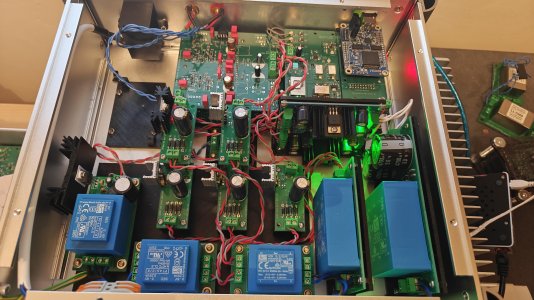Put this here as it is about other equipment . I only listen digital music I do not play vinyl and this in my case a very definite choice . It started when CD was introduced and over the years has changed to file playing and streaming . Most of my listening is to CD,s ripped as FLAC files stored on a Music Server with a HD and using Lyrion Server software . In my quest for better quality there things have struck and become areas I have gone down the rabbit hole in search of answers . Much of this is not accepted and often denied by others but these are just my thoughts . Firstly power supplies , I used to have items in the music / network chain powered by SMPS supplies but I have found that replacing all of these with good quality LPSU supplies makes a difference and lowers the back ground noise in your system . Next comes vibration , now while this is accepted for mechanical items it is not always thought about for players , dac,s and even routers . I found that each and every one has some form of vibration which using things like Stack Audio Isolaters , Black Ravioli pads reduced and the music level improved . Lastly and almost certainly the area I get most push back on is digital clocking . All music files are based around a clock and timing . In my view the more stable and accurate the clock the better and more natural the music sounds . Within digital there are two different clocks the main clock and the word clock . The main clock is fixed at 10 kHz while the word clock varies by the different digital levels 44.1 , 48 , 96 , 176.4 , 192 and above . Most vital is the best main clock and using the modest Leo Bodnar GPS clock at around £180 is Mutec then good enough to show major improvements over most internal clocks . You can spend much more on accurate stable clocks but we are talking lots more . All the above in my current experience make good levels of improvement but in many cases the improvements are incremental with each change building on the last one . So a bit of a meander but hopefully enough to give others something to think about .

